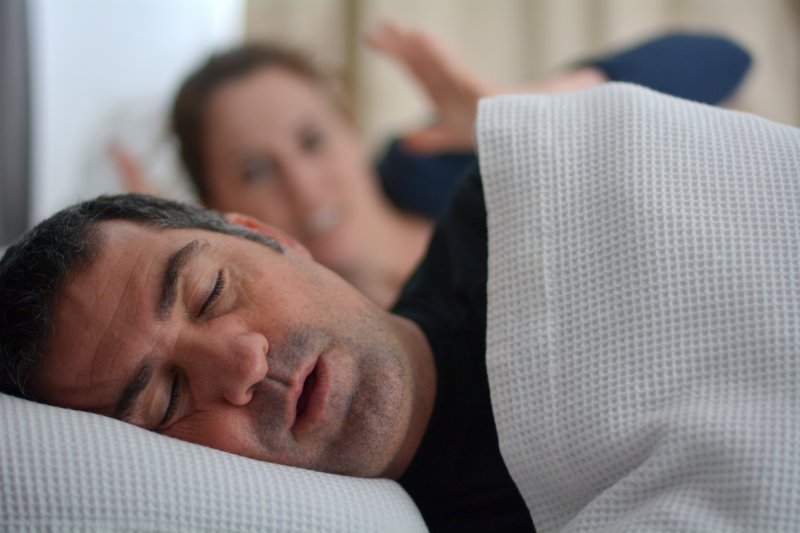Can Exercise Reduce Sleep Apnea Symptoms?
March 14, 2023

If you suffer from sleep apnea, you know how it can lower your quality of life. After all, the condition interferes with the restful snoozing all people need! That said, many need help to manage this issue. Its signs aren’t easily relieved without professional care. Luckily, there’s still hope: research shows that exercise reduces sleep apnea symptoms! As for the evidence, let your local dentist explain. Here, then, is how physical activity helps with sleep apnea and other care tips.
A Review: What’s Sleep Apnea?
Before going further, you’ll want to review sleep apnea’s nature. Doing so will help you grasp the connection between it and exercise.
Remember: Obstructive sleep apnea (OSA) is a disorder in which breathing repeatedly stops and starts when you sleep. It occurs when your airway is partially or fully blocked by excess tissue. As that happens, your brain must wake you to clear the blockage and resume breathing. These awakenings, in turn, result in deeply fractured sleep.
Common symptoms of OSA tend to include:
- Frequent daytime exhaustion/fatigue
- Loud, chronic snoring
- Difficulties with memory and concentration
- Waking up with a headache
Exercise Means Easier Breathing
True enough, you can’t consciously control your breath as you sleep. However, daily physical exercise can naturally reduce nighttime breathing problems.
That latter fact is the conclusion of recent sleep apnea research. In a study by the University of Pittsburgh School of Sleep Medicine, participants who did brisk walking and weight training reduced their disorder symptoms by 25%. In particular, they exhibited less daytime sleepiness, less fatigue, and sharper thinking.
Several possible reasons exist for these effects. One is that physical activity strengthens the respiratory system, thus allowing for more air to reach through potential blockages. On the other hand, weight loss stemming from exercise often reduces or eliminates blocks in the airway.
Other Ways to Manage Sleep Apnea Symptoms
Of course, exercise alone won’t cure sleep apnea. You’ll need to supplement it with other actions to do that. Some good ones to consider are:
- “Exercise” Your Mouth & Face – Throat practices can help fight sleep apnea. As such, include tiger yells, tongue slides, and soft palate stretches into your daily routine.
- Stick to a Healthy Diet – By maintaining a healthy diet, you’ll lose weight more naturally and have more energy for exercise. Foods you could add range from nuts and bananas to yogurt.
- See Your Local Dentist – Your sleep dentist will remedy the issue if all else fails. They can offer oral appliance therapy or (in some cases) a CPAP machine.
If you squeeze more physical activity into your day, the exercise reduces sleep apnea symptoms. So, go ahead and get pumped!
About the Practice
Dolfield Dental is based in Owings Mills, MD. Led by Drs. Jacob and Cynthia Miller, our practice offers attentive dental care for all. To that end, we provide patients with preventive, cosmetic, and restorative treatments, not to mention emergency dental procedures. In fact, we also pride ourselves on having excellent sleep apnea therapy. For more information or to book a visit, you can reach us on our website or by phone at (410)-902-4110.
No Comments
No comments yet.
RSS feed for comments on this post.
Sorry, the comment form is closed at this time.
